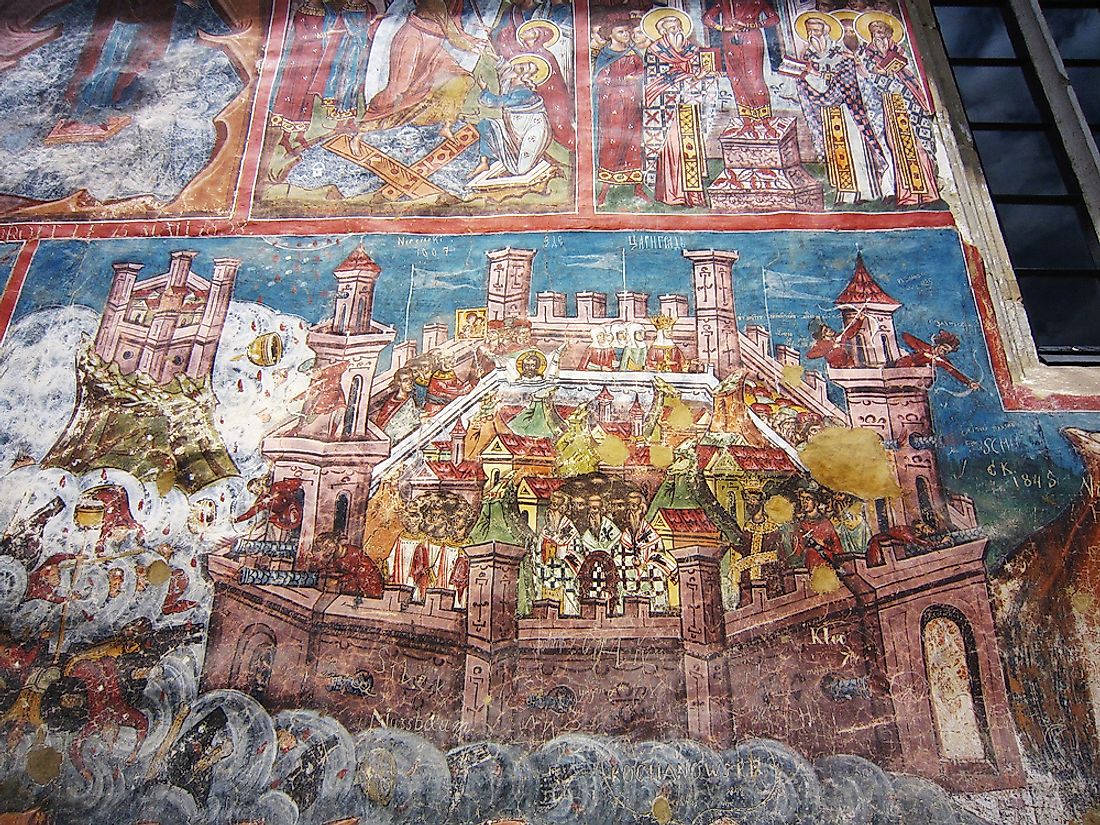What Was The Siege Of Constantinople?

Description
The siege of Constantinople, also known as the First Arab Siege of Constantinople, was a crucial engagement during the Arab-Byzantine wars between 674 and 678. The conflict was led by Caliph Mu'awiya I who had every intention of expanding the Umayyad Caliphate into the Byzantine Empire.
Before the siege began, the Arabs fortified most of the bases on the Asia Minor coast then went ahead to blockade Constantinople. The peninsula of Cyzicus served as the perfect place to spend the winter while the summer presented opportunities for attacking the city’s fortifications. Eventually, the Byzantine Empire crushed the invading Arabs by using Greek fire, an extremely potent incendiary in liquid form. After defeating the Arab navy, the Byzantines also quashed their land forces thus ending the siege. The end of the siege was followed by a peace agreement between the two belligerents that ensured the prosperity of the Byzantine Empire for a while. In fact, the breakout of another Muslim civil war after the siege ensured that the Byzantine Empire enjoyed a bit of superiority over the Caliphate.
Importance And Outcome
The Arabs decided to go after Constantinople because it was the focal point of operations for the Byzantine Empire. By going after the city, the Arabs wanted to cripple the center thus ensuring easy victory over other provinces of the Byzantine Empire. Had the Arabs won, the provinces would have fallen easily because of the lack of coordination.
Secondly, the defeat also marked the beginning of the end Mu'awiya's mission of slowly weakening the Byzantines that had begun in 661. Enormous amounts of resources were poured into constructing fleets and maintaining the siege. The defeat at the hands of the Byzantines also dealt a massive blow to the prestige and respect that the Caliphate used to command. Conversely, the Byzantine Empire’s from other states grew. Several heads of state presented plenty of gifts as a way of congratulating and recognizing the supremacy the supremacy of the Byzantines. Consequently, the Byzantines consolidated and fortified most of the positions thus ensuring a period of safety and prosperity.
Following the peace treaty after the Caliphate’s defeat, Constantine IV, leader of the Byzantine Empire, decided to use the period of peace to deal with another threat; that of Bulgar in the Balkans. However, his army was soundly defeated leading to the establishment of the Bulgar state in the northeastern side of Balkans. On the other side, the Caliphate began to unravel from within. This unraveling was made even worse by another Muslim civil war. The peace between the two lasted until Justinian II, Constantine IV’s son, took over. In 693, the peace broke after Justinian was deposed and the Byzantines defeated by the Umayyads in Sebastopolis. Following the defeat and anarchy that followed, the Arabs made another attempt at Constantinople between 717 and 718. The Arabs were rebuffed again during the second attempt.
The accounts of the siege have come under scrutiny from scholars such as James Howard-Johnson. He argues that the siege did not actually take between 674 and 678 since most eastern sources do not have the account. Instead, he claims that the events of the second siege influenced the recording of the first battle.











